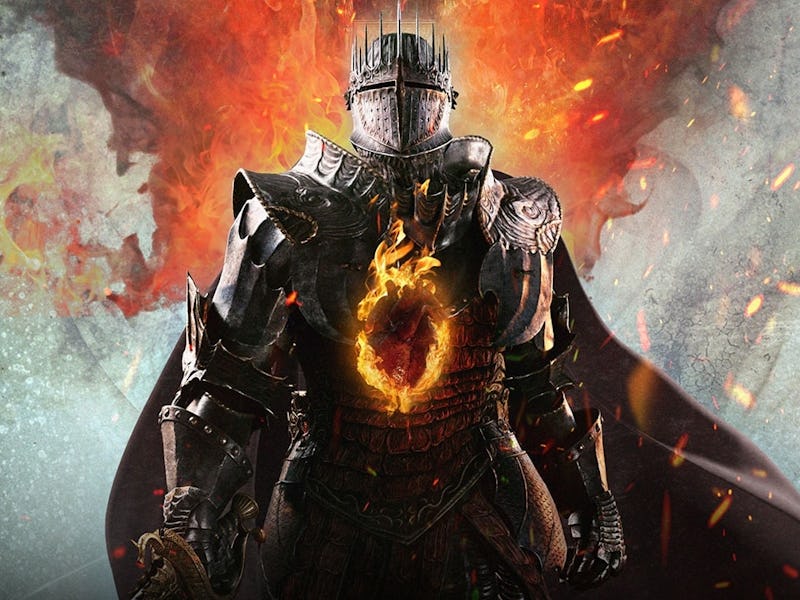Dragon’s Dogma 2 Copies a Brilliant Idea From the Most Epic Action Game of the Century
Bigger and better.

When Dragon’s Dogma launched in 2012, it was well-received but had something of an oddball reputation. It was the kind of game you’d only hear about from weirdos (myself included) who couldn’t help but extol its virtues any chance they got. Capcom seems intent on giving its sequel a much bigger debut with the latest Dragon’s Dogma 2 presentation showing how the sequel will improve two of the original’s best features.
The most eye-catching part of Capcom’s November Dragon’s Dogma 2 showcase was the Talos — a giant stone statue that comes to life to threaten the kingdom of Vermund. Talos easily rivals the size of some of Shadow of the Colossus’ behemoths, and players can scale its massive body to take it down. As Capcom showed, there are multiple ways to defeat the creature, from attacking it with a ballista to hitching a ride on a harpy and smashing the extremely obvious weak point on its head, similar to the multi-stage fight against Zorah Magdaros in Monster Hunter World.
Capcom offered the best look yet at Dragon’s Dogma 2 in November.
While the Talos fight is impressive, it’s most notable because it represents another key part of Dragon’s Dogma 2’s design: the freedom to explore and use environments to your advantage. We’ve seen crumbling bridges used against both enemies and players in previous footage, and the multi-pronged attack on Talos suggests that even more ways to interact with the world could be waiting.
In addition to the big takedown, it’s a subtler part of the recent stream that may reveal the most exciting update for real Dragon’s Dogma sickos. In what’s honestly a pretty dry section of the broadcast, Capcom showed off an example of a quest in Dragon’s Dogma 2. The task itself is nothing too exciting — something about an ogre kidnapping an elf — but one detail stood out.
The mission involves helping a group of elves who speak a different language from that of your main character. At first, there’s no way to tell what they’re saying until one member of the settlement offers to translate for you.
The Talos showed off Capcom’s larger ambitions for Dragon’s Dogma 2.
One of Dragon’s Dogma’s most inventive ideas was the ability to create an NPC companion called a Pawn who followed you on your adventure, learning how to effectively fight enemies and navigate the terrain over time. While they were one of the best aspects of Dragon’s Dogma, it always felt like there was so much untapped potential in these party members. Any time you’re not playing Dragon’s Dogma, other players can recruit your Pawn, either by summoning them directly or by encountering them while exploring the world in their own game.
The fact that that mechanic exists at all never stops being exciting, but in practice, there’s very little difference between Pawns of the same class. More often than not, I just pick the Pawn that looks the best, which also became less exciting after the Dark Arisen expansion introduced overpowered gear and everyone’s Pawns started looking the same.
In Dragon’s Dogma 2, Pawns can also learn skills, one of which is the ability to speak Elvish. We also see a Pawn with a skill that appears to increase your carrying capacity or share the weight of items among party members.
Companions could have much more variety in Dragon’s Dogma 2.
It’s still too early to tell how much Capcom will follow through on the mechanics shown in the presentation, but Pawn skills could be a great way to differentiate one from another. Particularly if Dragon’s Dogma 2 includes enough bold decisions like making some languages incomprehensible without a translator, Pawns could come to life in a way they never truly did in the original.
The best moments in Dragon’s Dogma came in feeling like you’re actually going on a grand adventure with your party. Even as the Pawns repeatedly shout the same bits of dialogue and run into each other’s lines of fire, they felt lifelike in a way that most NPCs don’t. If Dragon’s Dogma 2 succeeds in making each Pawn actually feel unique, it will have made the 10-year wait for the sequel worth it.